📘 Budgeting for Teens
“A budget is telling your money where to go — instead of wondering where it went.”
— Dave Ramsey
Welcome back!
You already know how to manage money and tell needs from wants.
Now it’s time to level up: let’s make your first real budget.
💡 What Is a Budget (Really)?
A budget is a plan for your money — a roadmap that shows:
- what you earn,
- what you spend,
- and what you save.
Think of it like a Google Maps for your wallet:
you set your destination (goal), and your budget shows the best route.
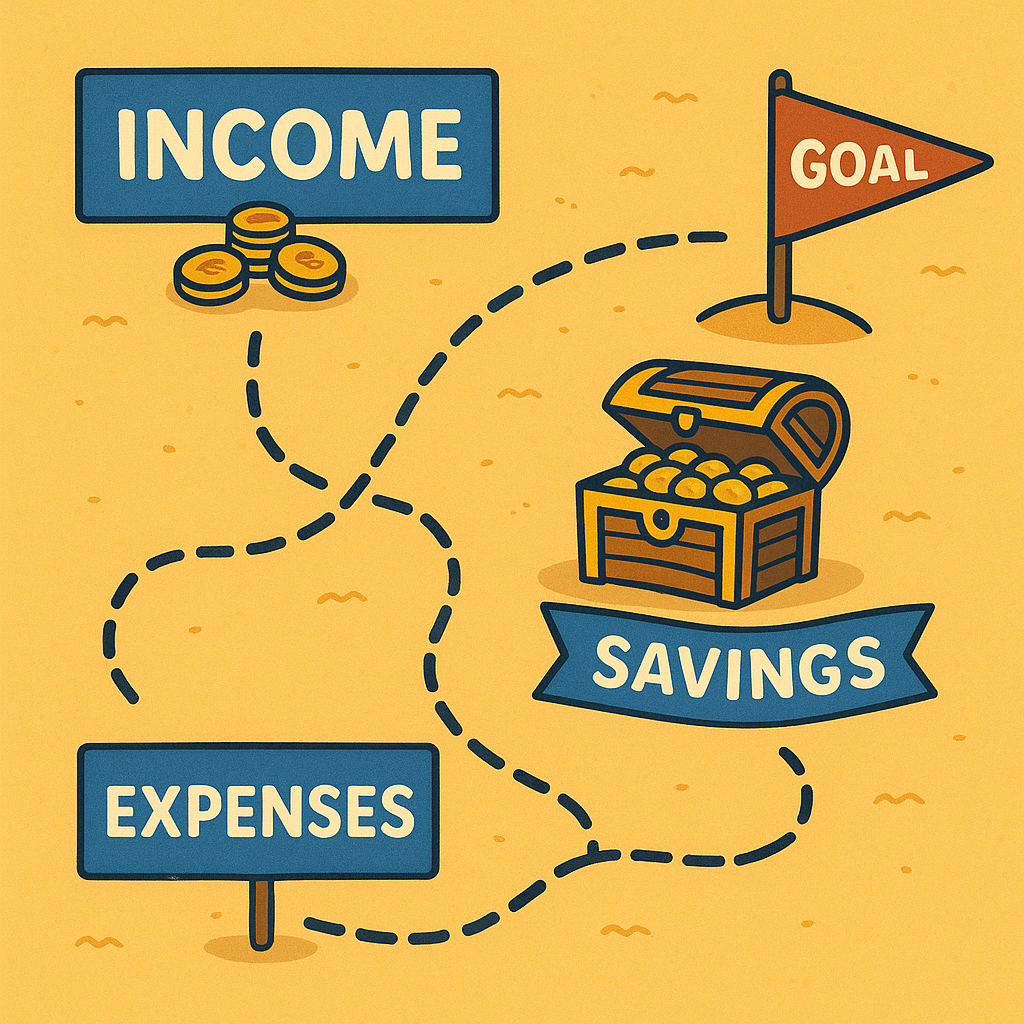
The journey of money — from Income through Expenses and Savings toward your final Goal.
🎯 Why Budgeting Matters
Without a budget, money slips away like water through your fingers.
With a budget:
- You see where your money goes,
- You plan your spending,
- You avoid surprises,
- And you reach your goals faster.
Even if your income is small, practicing now makes you unstoppable later.
🧮 The Basic Formula
Budget = Income – Expenses
If the result is positive → 🎉 you’re saving!
If it’s negative → ⚠️ time to adjust your spending.
Example:
| Description | Amount |
|---|---|
| Monthly allowance | +$40 |
| Snacks & treats | -$15 |
| Transport | -$10 |
| Savings | -$10 |
| Balance | +$5 ✅ |
See? Simple math — powerful results.
📋 Step-by-Step: How to Make Your First Budget
1️⃣ List Your Income Sources
Include everything:
- Allowance
- Part-time job
- Gifts or occasional work
Write down how much and how often you get it.
2️⃣ Track Your Expenses
Spend a week noting every purchase. Yes, every one — even that $1 soda.
You’ll be surprised how the small stuff adds up.
3️⃣ Categorize
Group your spending into:
- Needs 🧾
- Wants 🎮
- Savings 💰
- Giving ❤️
4️⃣ Set a Goal
What do you want to achieve?
→ “Save $100 for a bike.”
→ “Buy gifts for my family.”
→ “Have an emergency fund.”
5️⃣ Make Adjustments
If your spending is too high, cut some wants.
If you have extra — increase savings.
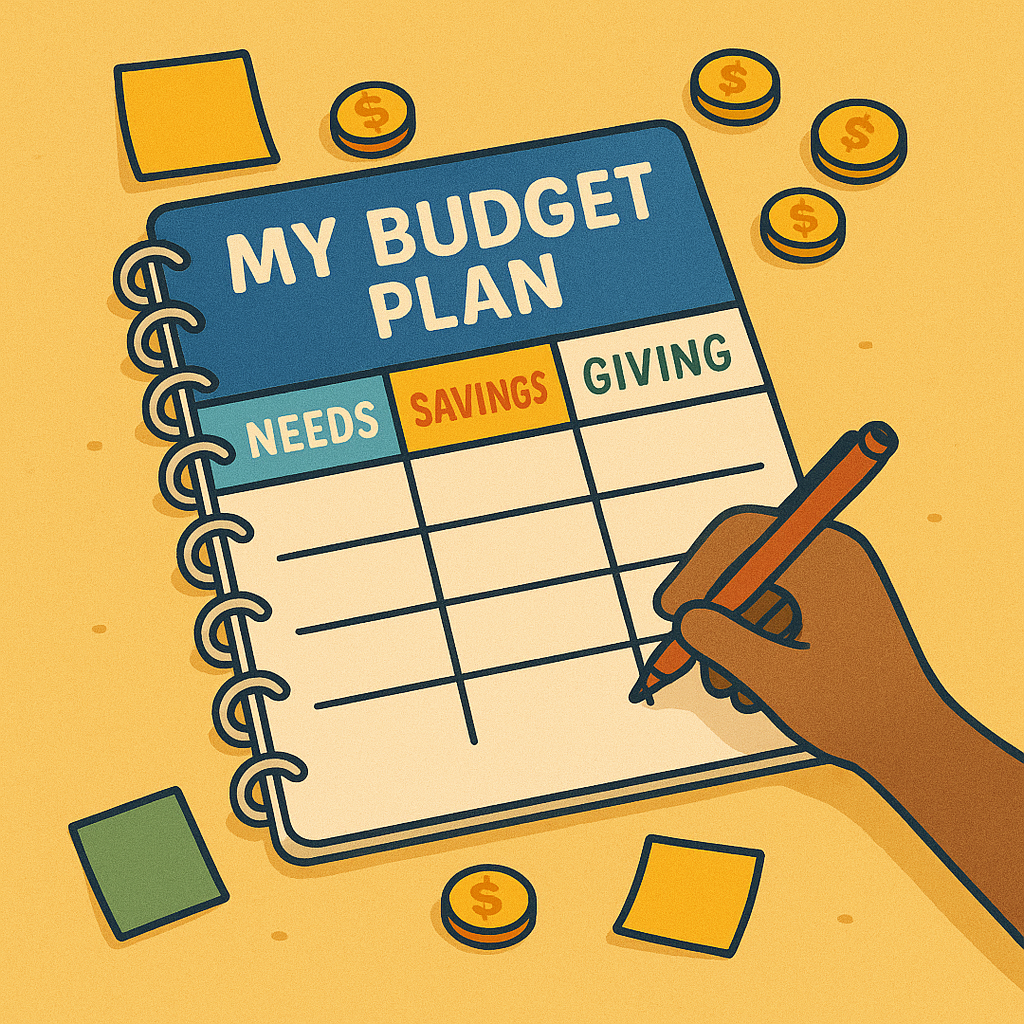
Creating a simple budget plan — organizing spending into Needs, Wants, Savings, and Giving.
🧠 Example: The 4-Jar Method
A classic visual tool for beginners — divide your money into four jars:
| Jar | Purpose | Example |
|---|---|---|
| 💵 Spend | Daily use | Snacks, movies |
| 💰 Save | Future goals | Laptop, bike |
| ❤️ Give | Help others | Charity, gifts |
| 🧾 Learn | Invest in yourself | Courses, books |
It works with physical jars, envelopes, or even phone “wallets.”
Every time you get money, split it right away.
You’ll instantly see where your money “lives.”
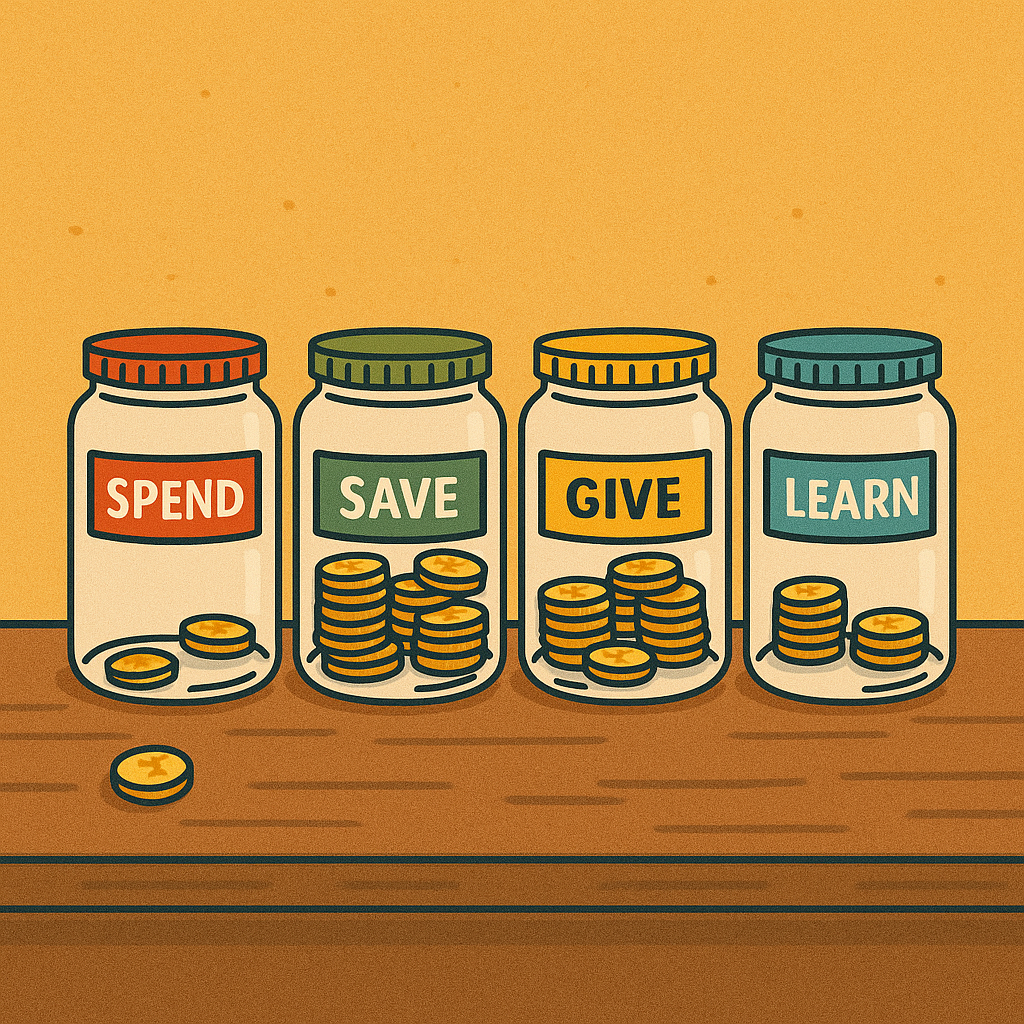
The four-jar method — Spend, Save, Give, and Learn — a simple way to organize your money visually.
🧩 Budget Template (Printable or Digital)
Here’s a simple starter format you can recreate in a notebook or spreadsheet:
| Category | Planned | Spent | Difference |
|---|---|---|---|
| Needs | $20 | $18 | +$2 |
| Wants | $10 | $12 | -$2 |
| Savings | $8 | $8 | $0 |
| Giving | $2 | $2 | $0 |
| Total | $40 | $40 | ✅ Balanced! |
✅ Tip: Review your budget every Sunday evening.
It takes 5 minutes and saves you from 5 headaches later.
💬 Real-Life Story: Emma’s Ice Cream Fund
Emma wanted to go on a school trip that cost $100.
She had no job — only a small weekly allowance.
So she made a simple budget:
- Save $5 each week,
- Spend $10 on essentials,
- Skip buying sodas for a month.
In 20 weeks, she reached her goal.
No magic. Just consistency.
Budgeting isn’t about limits — it’s about giving your money a mission.
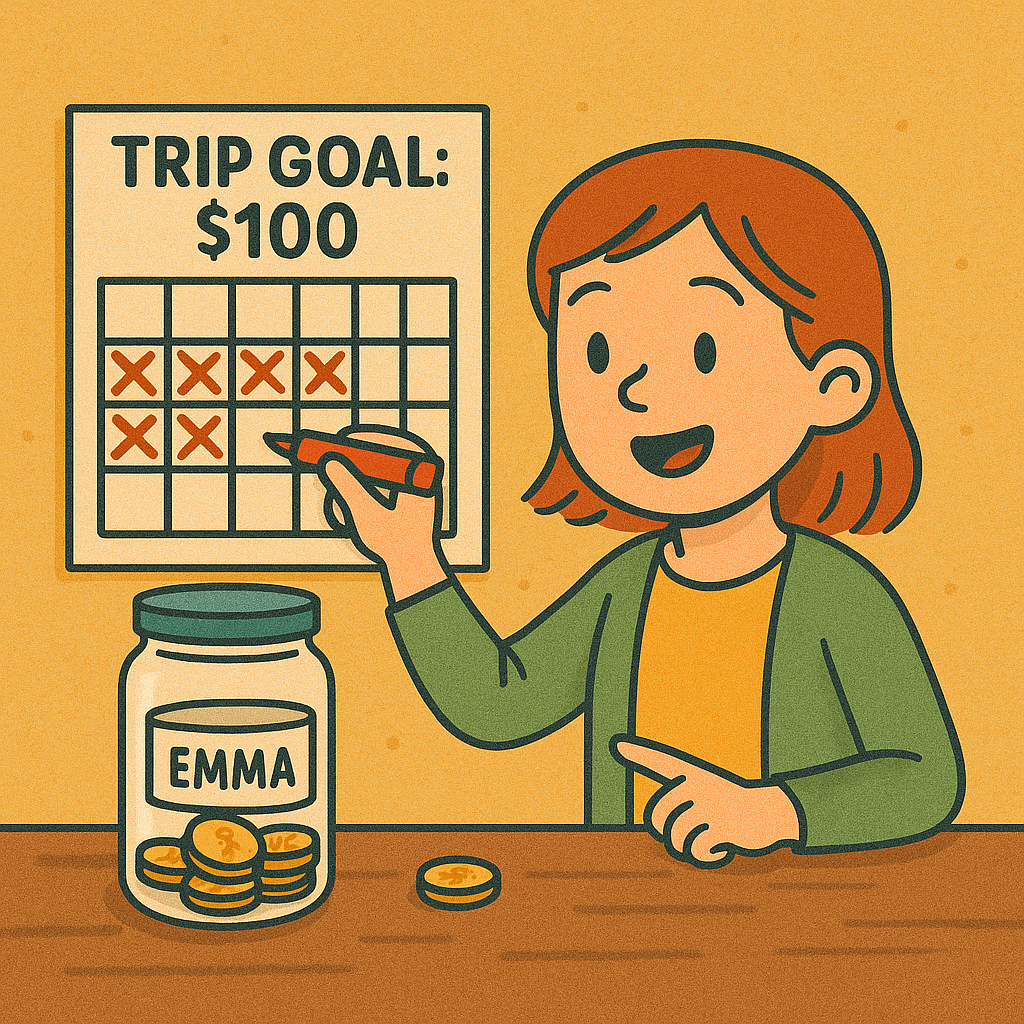
Emma’s savings journey — marking progress on her Trip Goal calendar while watching her jar fill up with coins.
🧩 Mini-Exercise: “My First Budget”
Let’s make it real:
- Write your income for the month.
- List your expenses and group them (Needs, Wants, Savings, Giving).
- Create your goal (short-term or long-term).
- Review your balance.
💡 Optional: Take a photo of your budget plan and keep it as a reminder for next month.
📚 Summary
| Concept | Meaning |
|---|---|
| Budget | A plan for income and expenses |
| Goal | What you’re saving toward |
| Tracking | Watching where your money goes |
| Adjustment | Changing your plan when needed |
| Consistency | The key to success |
🏆 Reflection Badge: Budget Builder
Complete this lesson and make your first personal budget to earn your Budget Builder Badge!
🧭 What’s Next?
Now that you can plan and track your money, it’s time to put your skills to the test!
In the next lesson, you’ll try a fun, interactive experience —
the Pocket Money Simulation, where you’ll make real-life financial decisions.
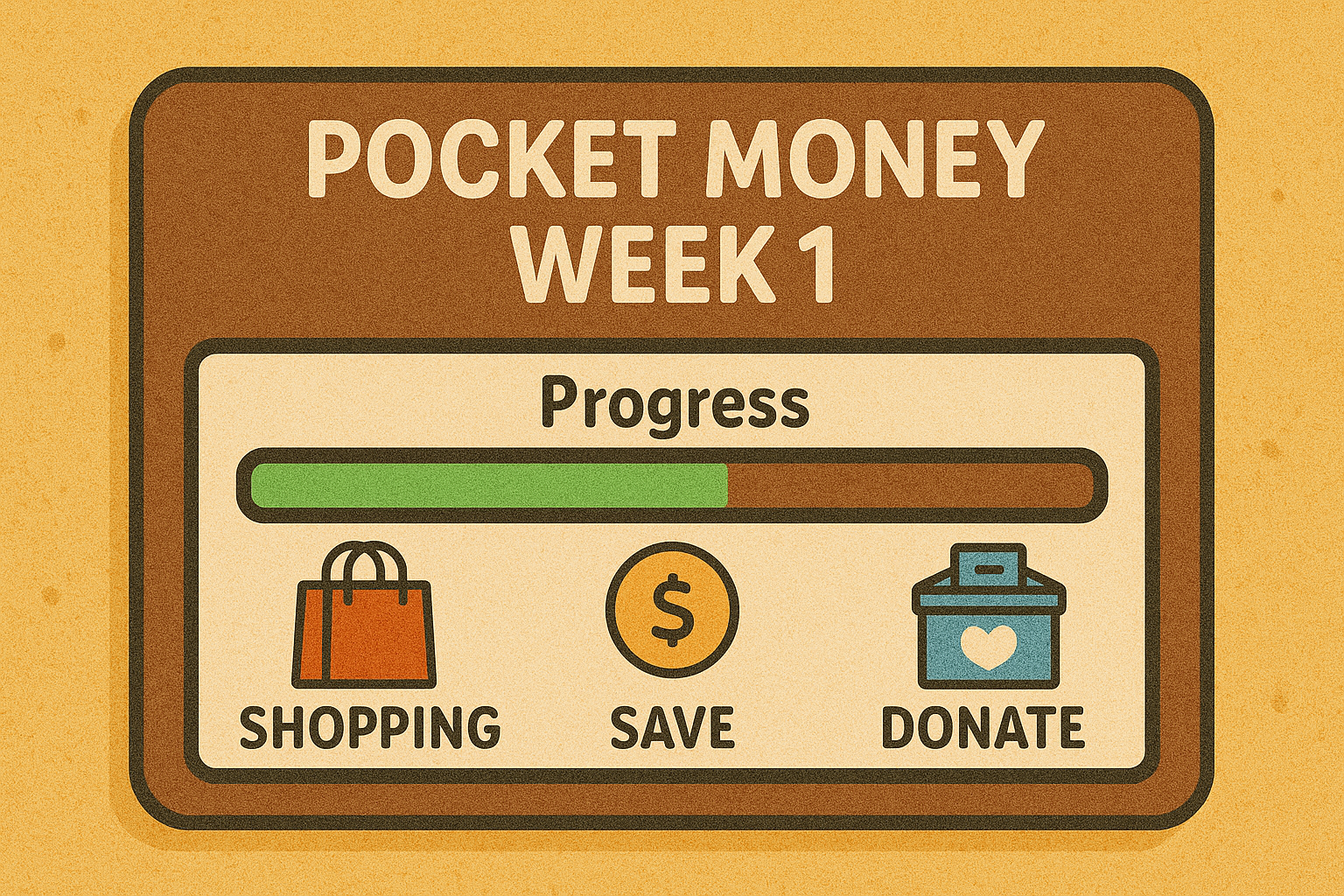
Pocket Money Week 1 — track your choices between Shopping, Saving, and Donating as your progress bar fills up.
📝 Try this today
List all income sources for this month (allowance, gifts, mini-jobs).
Categorize last week’s spending into Needs/Wants/Savings/Giving.
Create your first budget plan and set one short-term goal.
Lesson Progress
Module: foundations · +0% upon completion